What about derringers? Are they worthwhile to buy and carry, or not? The original derringer was a product of one Henry Deringer, a 19th-century maker of small muzzleloading pocket pistols. His original Philadelphia Deringer percussion-lock pistols were usually 41 caliber and varied in length from 1.5 to 6 inches. The most notable use of a Deringer was by John Wilkes Booth, who shot President Abraham Lincoln. Once cartridge guns came into being, Deringer’s name was misspelled often enough to become the generic description of a small pocket pistol of limited capacity, often with a sliding or pivoting breech block. They commonly carried two shots, although some were designed for up to four shots. They were sometimes called “muff pistols” because they were carried in a muff or hand warmer used in the winter. Also, the derringer became a backup favorite of Western marshals and outlaws alike.
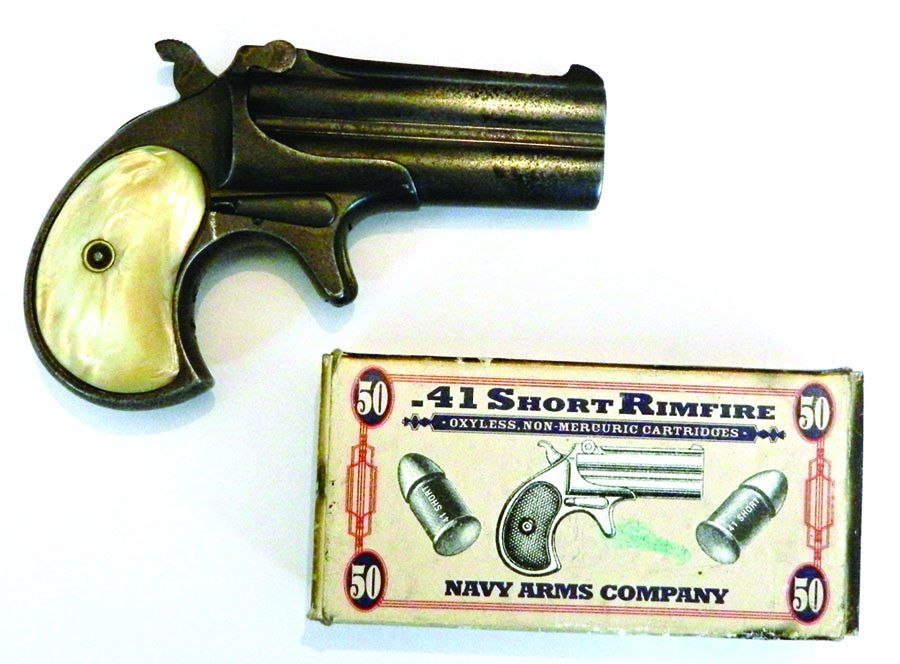
Among the most successful of these handguns was the Remington Derringer. In fact, the Remington’s profile is associated more with the derringer than Deringer’s original single-shot black-powder pistol. The Remington doubled the payload with twin barrels in the over-and-under fashion. The Remington barrels pivot upward to load and unload, and a pivoting cam on the firing pin fired first one barrel then the other. The Remington Derringer was made of iron, never steel, and was manufactured from 1866 to 1935. That is a long run for a relatively primitive handgun. The .41 Short Rimfire it fired was no powerhouse, exiting the Remington barrel at 425 fps. There have been many copies of the Remington, and two of the pistols tested in this report are copies of the Remington, namely the Cobra Enterprises CB9 Big Bore Derringer 9mm Luger, $151; and the American Derringer Company Standard Model 38 Special, which we bought used for $212. The third gun in the test was a new take on the derringer concept, the DoubleTap Defense Tactical Pocket Pistol in 9mm Luger, $499 MSRP and a $345 counter price from Cheaper Than Dirt!.
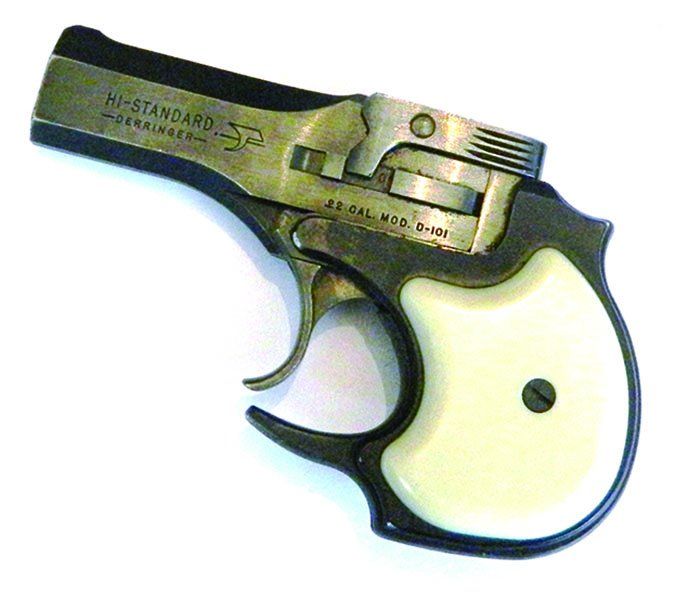
The derringers were all easy to carry well, and the balance and flat profile make for a nice pocket or vest pistol. However, after testing both the derringer concept and the individual derringers, we think the money spent on these handguns would be better used elsewhere. But we graded on a “derringer” scale relative to each other, even though none of our test shooters would buy one. Here’s what we found:
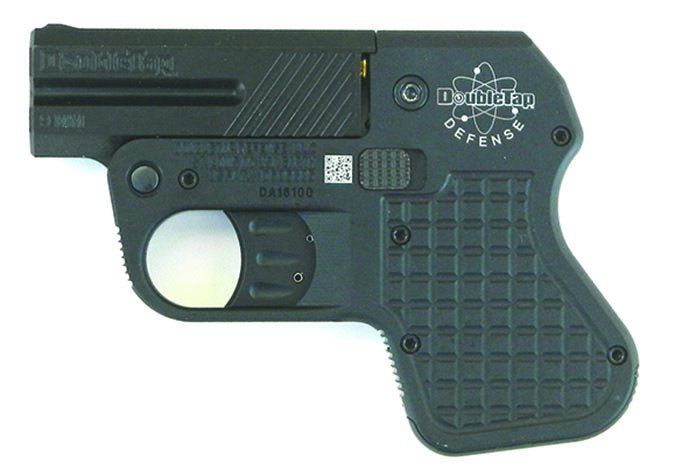
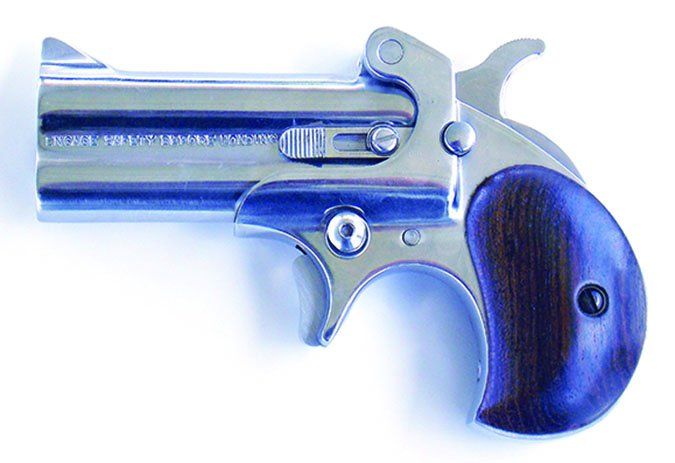
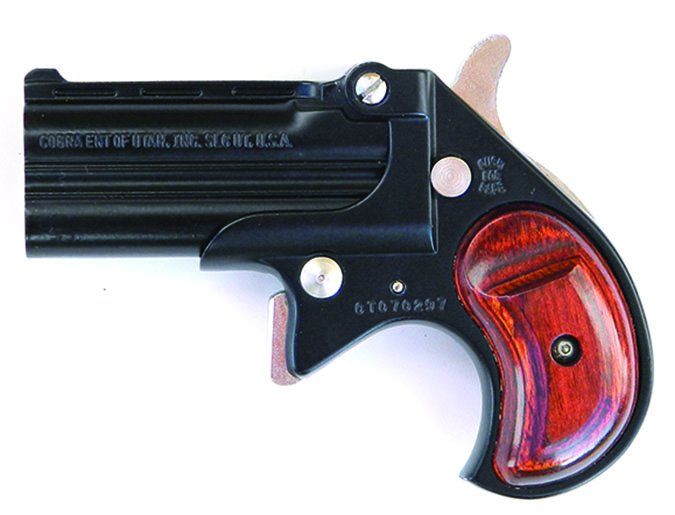
Cobra Enterprises CB9
Big Bore Derringer9mm Luger, $151
This was our price at the time of the test from CheaperThanDirt.com. The Cobra Derringer weighed about 14 ounces, was about 4.5 inches long and featured two 2.75-inch barrels. This was a single-action design with an exposed hammer, requiring the hammer to be cocked for firing. The finish was adequate for the type and was evenly applied. The grips were surprisingly attractive and fit the frame well. However, the grips loosened with a minimum amount of firing. There was a rib on top of the upper barrel and a set of rudimentary fixed sights.
The Cobra was difficult to cock on the draw and also difficult to use well, we thought. The handle didn’t fit most hands well, the grip was disrupted by the cocking motion, and the trigger compression was heavy at just over 14 pounds. Compression was riddled with creep, and the trigger broke abruptly with considerable backlash. This was the worst trigger action we ever recall testing.
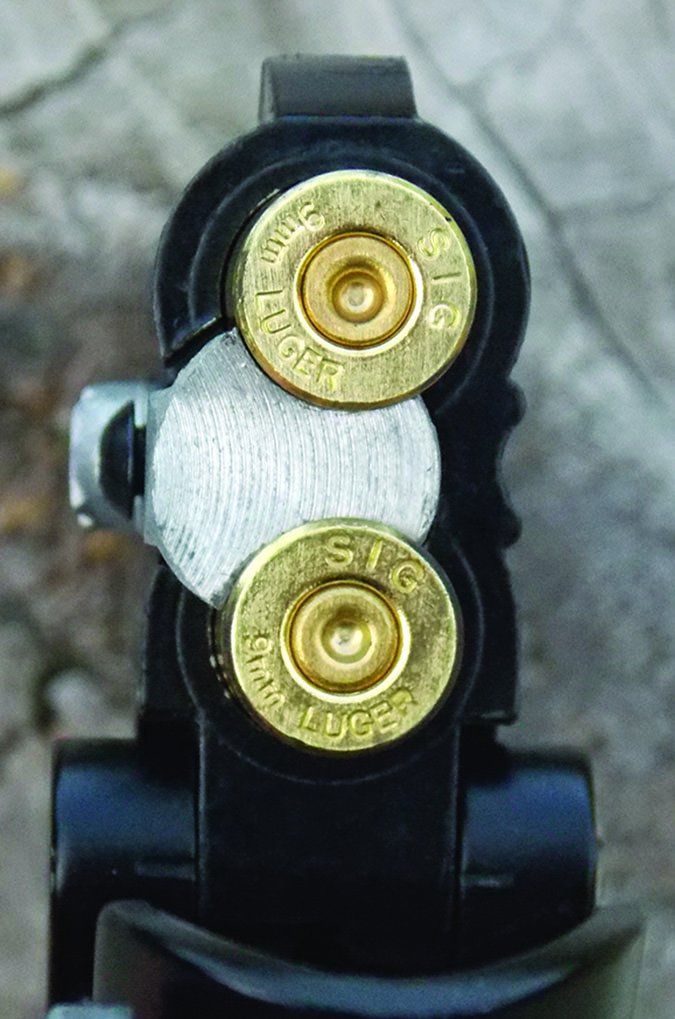
To open the pistol, the shooter moved a lever above the trigger downward and all the way to its forward travel spot, and the barrels swung upward. Two rounds were loaded. The barrels were closed and the lever returned to the locked position. There was a rudimentary extractor attached to the barrel that worked well enough. To fire the pistol, the shooter cocked the hammer and pressed the trigger. Considerable effort was required to cock the hammer. It was easier to come across the side of the hammer, rather than bringing the thumb over from the rear. Female shooters experienced some difficulty and found cocking the hammer of the Cobra to be a two-hand proposition. After the hammer was cocked and one barrel fired, the shooter had to cock the hammer again to fire the other barrel. Out of the box, the Cobra fired the bottom barrel first.
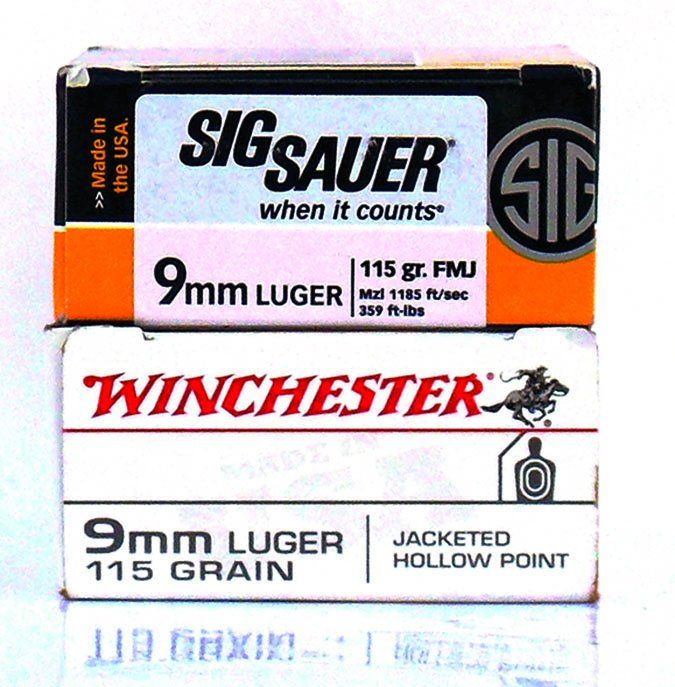
The safe operation of the Cobra demands attention to detail. We are leery of a handgun that requires this much study to operate safely. Before loading the pistol, the shooter moved the hammer partially to the rear without cocking the hammer and pressed the button type safety to the left. If this safety is not actuated, a firing pin nose will rest upon the primer of the chambered cartridge. Since the Cobra uses a rebounding-type firing-pin system, only one firing pin will be at rest on the cartridges at a time. This is an antiquated and unsafe firing-pin position, in our opinion. Next, load the pistol. To fire the Cobra, the hammer must be cocked before the safety may be pushed to the left. You cannot move the safety and then cock the hammer. During the firing tests, most raters used the left hand to work the safety; a few with long fingers used the forefinger. This wasn’t a fast system. During the test the raters — all experienced — sometimes failed to kick the safety over, and the Cobra did not fire. Cock the hammer and pull the trigger, and the hammer falls, but the gun doesn’t go bang if the safety is engaged. It just isn’t natural to cock a hammer and then release a safety.
During firing, we used the SIG Sauer Elite 115-grain FMJ load ($12.50/50 rounds from Targetsports.com) and the Winchester USA 115-grain JHP ($21/50 from CheaperThanDirt.com) We had a few surprises when firing the Cobra Derringer. First, the Cobra was not terribly uncomfortable to fire as far as recoil. Most raters likened it to the recoil of a steel-frame Chief’s Special with standard 38 Special loads. The muzzle flipped up in recoil and the grip rolled back, much like on a single-action revolver. Another surprise were the velocities achieved by the 115-grain loads. The SIG Sauer Elite load clocked 1050 fps versus 1160 fps in a Browning High Power, while the Winchester load clocked 944 fps, down from 1170 fps in the High Power. Different powder does funny things in a short barrel.
While firing the pistol, the raters were at odds of how to test the gun. Drawing from the pocket and cocking quickly and firing the pistol resulted in a 6-inch group of two shots at ten feet or so. This wasn’t fast, considering the need to cock the hammer for each shot and taking the safety off. With a deliberate effort, standing in the two-hand stance, we fired at a man-sized silhouette at 5 yards. The point of impact versus point of aim was 18 inches high. Four shots grouped into 8 inches at 5 yards with the most deliberate fire. During the firing session, one of the Winchester loads was not ejected by the manual ejector. The hook slipped over the case rim, but this did not tie the gun up. The other barrel could still be loaded and fired. A pencil cleared this failure to extract.
Our Team Said: We do not like the need to cock the hammer and then move the safety, but on the other hand, we would never carry the handgun loaded with the safety off. Thus, the ability to quickly draw the pistol, shove it into the opponent’s body, and then fire is limited by the system. All the raters agreed that for personal defense on a tight budget, the High Point or SCCY 9mm is leagues ahead of this gun. So is the North American mini revolver, save for power. We would not buy this gun.
DoubleTap Defense Tactical
Pocket Pistol 9mm Luger, $345
The price listed was our price at the time of the test, but the Gunbroker “buy it now” price in October 2015 dropped to $199 for many new-in-the-box listings. Our FFLs tell us the dealer prices for DoubleTaps have dropped from $300+; now the dealer price is $149. We want to be clear and say we would purchase a Taurus Millennium or a good used Glock instead of this gun style. But they will not hide out where the DoubleTap will. So, if owning a flat hideout pistol is your goal, then read on.
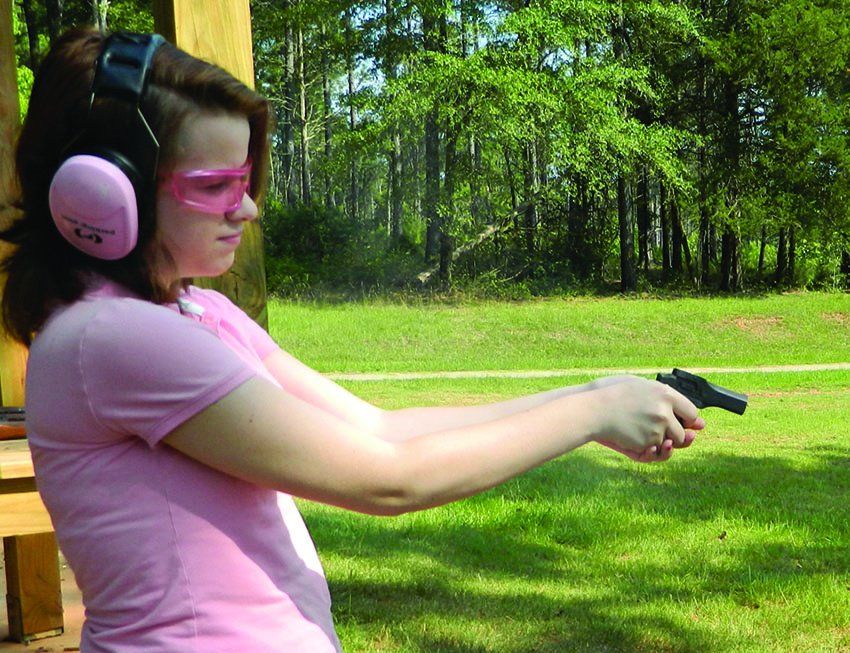
The DoubleTap gets high marks for fit, finish, and appearance. The DoubleTap has a snag-free profile with an internal double-action-only trigger mechanism. The trigger action was long and heavy at about 15 pounds and it stacked badly, in our opinion. The action was safe for carrying two rounds chambered without an external safety. There was a cross-bolt style release that holds the barrels in place. Press this ambidextrous control to the rear to swing the barrels upward for loading. There is no extractor or ejector. The sights on the handgun were a simple groove in the top of the cover, with a post on the barrel.
We got a surprise when we fired the pistol. We expected something akin to the Cobra’s recoil, but the DoubleTap stung us when fired, and recoil was actually painful and startling. The fit of the grip was angular with abrupt edges, and the pistol was only about 0.65 inch wide, which likewise caused great discomfort when firing. Our testers reported that this was the worst and most painful gun to shoot yet. In our opinion, the pistol’s recoil makes it unsuitable for use by anyone intending to fire the pistol in practice sessions as opposed to simply loading it and carrying it.
Shooting at a man-sized target at 5 yards, four shots went into 12 inches with the sight regulation better than the Cobra, about 6 inches high. The lower barrel seemed better regulated at 5 inches high. We liked the DoubleTap’s double-action trigger better than the Cobra’s.
Elsewhere, the DoubleTap exhibited greater velocity than the Cobra. However, with both standard-pressure loads tested, the DoubleTap exhibited high-pressure signs. The primers of every round fired were flattened. This is troubling.
Our Team Said: Due to harsh recoil, poor accuracy, and concern about excess pressure, the DoubleTap received a low rating. We would not buy this gun.
American Derringer Co.
Standard Model 38 Special,$212 (Used)
The American Derringer Company 38 Special isn’t a perfect comparison because it isn’t a 9mm, but we thought the recoil and terminal performance would be similar enough to include it, and its size and weight are appropriate for the caliber. The American Derringer Co. 38 Special was a very well finished single-action design with several improvements over the Remington type. The rear sight was easily the best of the pistols tested, and the tall front sight offered a quick reference in aiming. There are several other touches that earned this derringer a superior rating.
First, the lever that releases the barrel to turn 180 degrees up is spring loaded with a plunger. Having experience with Remington derringers and cheap copies that lost tension in the lever, this was a good addition, our gunsmith said. The grips were hand filling and comfortable. The trigger action was easily the best of the three derringers tested, breaking at a relatively crisp 8 pounds. However, there seemed to be some hesitation in the sear break and hammer fall. The American Derringer Company derringer was much easier to cock quickly than the Cobra. There was also a hammer-block safety that American Derringer Company advertised as automatic, but it isn’t quite. When the shooter loads the pistol and then brings the hammer back to the safety notch, the hammer block was applied. Thereafter, simply cock the hammer and fire the gun. The firing pin block works automatically, true enough, but be certain to pull the hammer to the safety notch to set it.
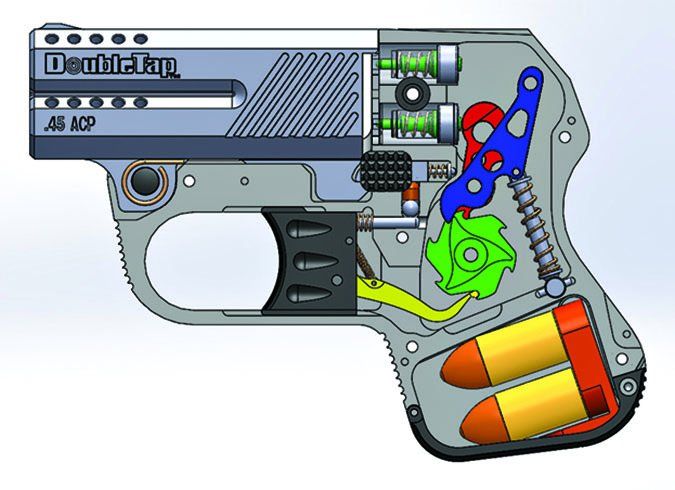
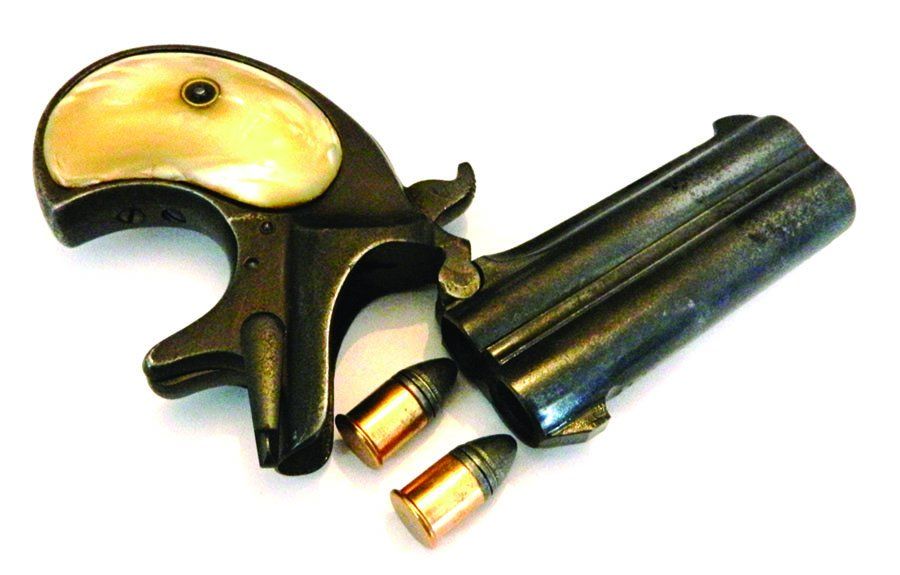
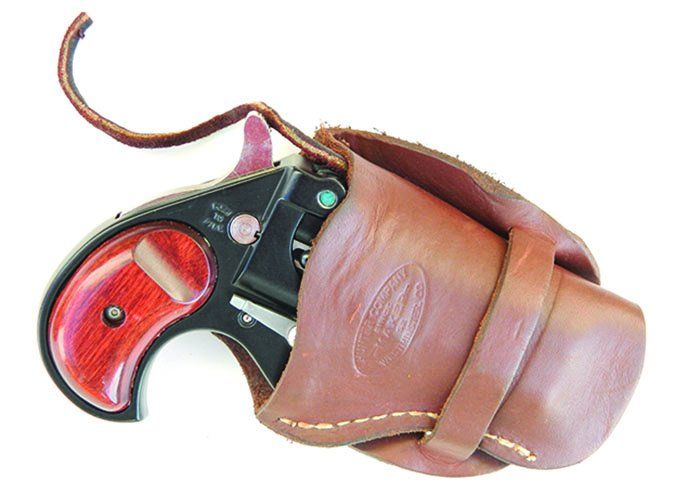
Firing the American Derringer Company 38 Special was interesting. Working at speed, we were able to deliver hits on man-sized targets with a degree of accuracy at 7 yards. Felt recoil was less than the Cobra 9mm, due to the superior grips and slightly heavier weight. With careful deliberation, we were able to fire a 4-inch group of six shots at 7 yards on one occasion, but we tested the gun for accuracy at the 5-yard range, as we did with the others. The load used was the Black Hills Ammunition 148-grain Target Wadcutter. Average velocity was 760 fps, superior to what we got out of a snubnose 38 Special revolver (730 fps, Smith & Wesson 442 with 1.9-inch barrel.) We also fired a few rounds of Black Hills Ammunition 125-grain JHP +P, with velocity hovering around 900 fps. Recoil was sharp, about the same as an aluminum-frame 38 Special snubnose. But we were able to fire comfortably enough to get hits at 7 yards. One of our raters, a law-enforcement veteran, summed it up: “I can see this as a backup or third gun.” Another noted that he could see carrying this derringer in the pocket with a shotshell up first for use against reptiles.
Our Team Said: The American Derringer Co. derringer is a better choice than either of the other derringers tested, we believe. Note: Our rating isn’t as a defensive handgun compared to revolvers or small autos, but rather as a derringer only.
Written and photographed by
R.K. Campbell, using evaluations from Gun Tests team testers.


























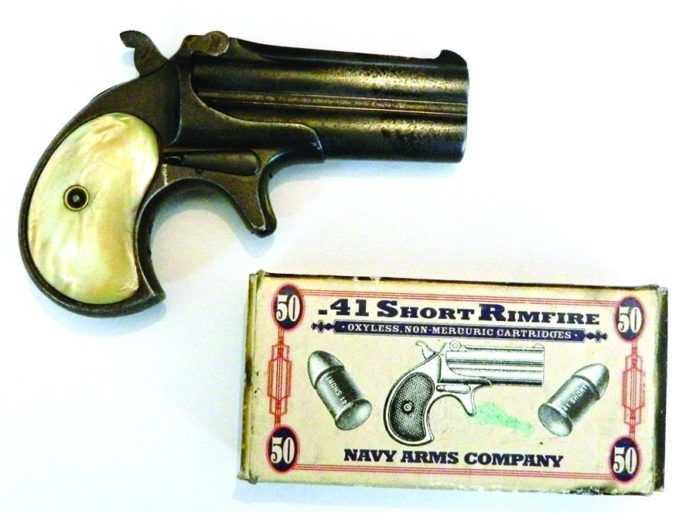



Can you send me a number so I can call you i have one of ur gun it won’t work my number is 662 528 1731
A lot of words simply to confirm the old adage: ‘ANYTHING except a derringer!’